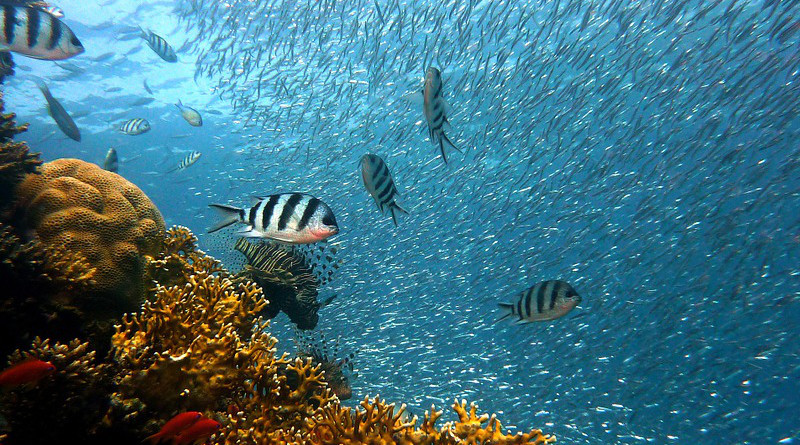We Can Still Restore Depleted Marine Life To Its Former Glory
By Daniel T Cross*
Overfishing, plastic pollution, climate change and other manmade stressors have dealt massive blows to the planet’s oceans.
Numerous coral reefs are dying off in acidifying tropical waters. Large swathes of the oceans have turned into oxygen-deprived dead zones. Iconic species like the Atlantic bluefin tuna are being fished into near-extinction. Mass tourism has wrought havoc on previously pristine coastal waters.
Time to despair? Not necessarily.
The state of marine life across much of the planet is precarious, yet there is still time to save beleaguered ecosystems. Marine life has shown remarkable resilience and with improved protection measures fragile marine ecosystems can rebound within a relatively short period.
Take Maya Bay in Thailand’s south, which came to fame as a location for the 1999 Hollywood movie The Beach, starring Leonardo DiCaprio. After becoming a popular tourist destination with thousands of frolicking visitors daily, the small beach’s marine ecosystem suffered grievous harm. Yet once local authorities closed the area down to tourism in 2018, marine life began to recover noticeably within months.
Similar feats of conservation and preservation can also be pulled off on a much larger scale. Restoring the health of oceans will require foresight and dedication, but it is doable. In fact, within just three decades we could “rebuild” marine life, argue the authors of a new study published in the journal Nature.
“We are at a point where we can choose between a legacy of a resilient and vibrant ocean or an irreversibly disrupted ocean,” stresses the study’s lead author Carlos Duarte, a marine scientist at the King Abdullah University of Science and Technology in Saudi Arabia.
The study provides examples of the successful recovery of marine populations, habitats and ecosystems as a result of effective conservation. Drawing on such successes, we can implement similar measures across the planet. As an example, the experts cite humpback whales, which have bounced back from critically low population levels since a ban on whaling was put in place in 1985.
Around the oceans effective conservation measures, the authors stress, could help restore depleted marine ecosystems to their former state, or near it, by mid-century. Salt marshes, mangroves, seagrasses, coral reefs, underwater kelp forests, oyster reefs, fisheries, megafauna and deep sea habitats could all benefit from stepped-up protection.
“We have a narrow window of opportunity to deliver a healthy ocean to our grandchildren’s generation, and we have the knowledge and tools to do so,” Duarte explained. “Failing to embrace this challenge — and in so doing condemning our grandchildren to a broken ocean unable to support high-quality livelihoods — is not an option,” he added.
About the author: Tibor Krausz, who writes under the penname Daniel T Cross, is an experienced writer and editor who has worked for several prominent newspapers and magazines worldwide, including The Christian Science Monitor, The Washington Post, The National Post, The Guardian, The Jerusalem Report, The South China Morning Post, The Bangkok Post and The Sydney Morning Herald. As a journalist, he has covered numerous environmental issues in depth.
Source: This article was published by Sustainability Times

